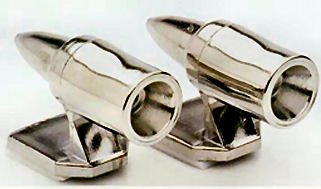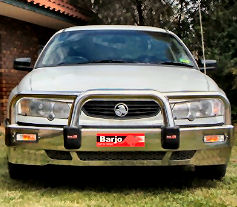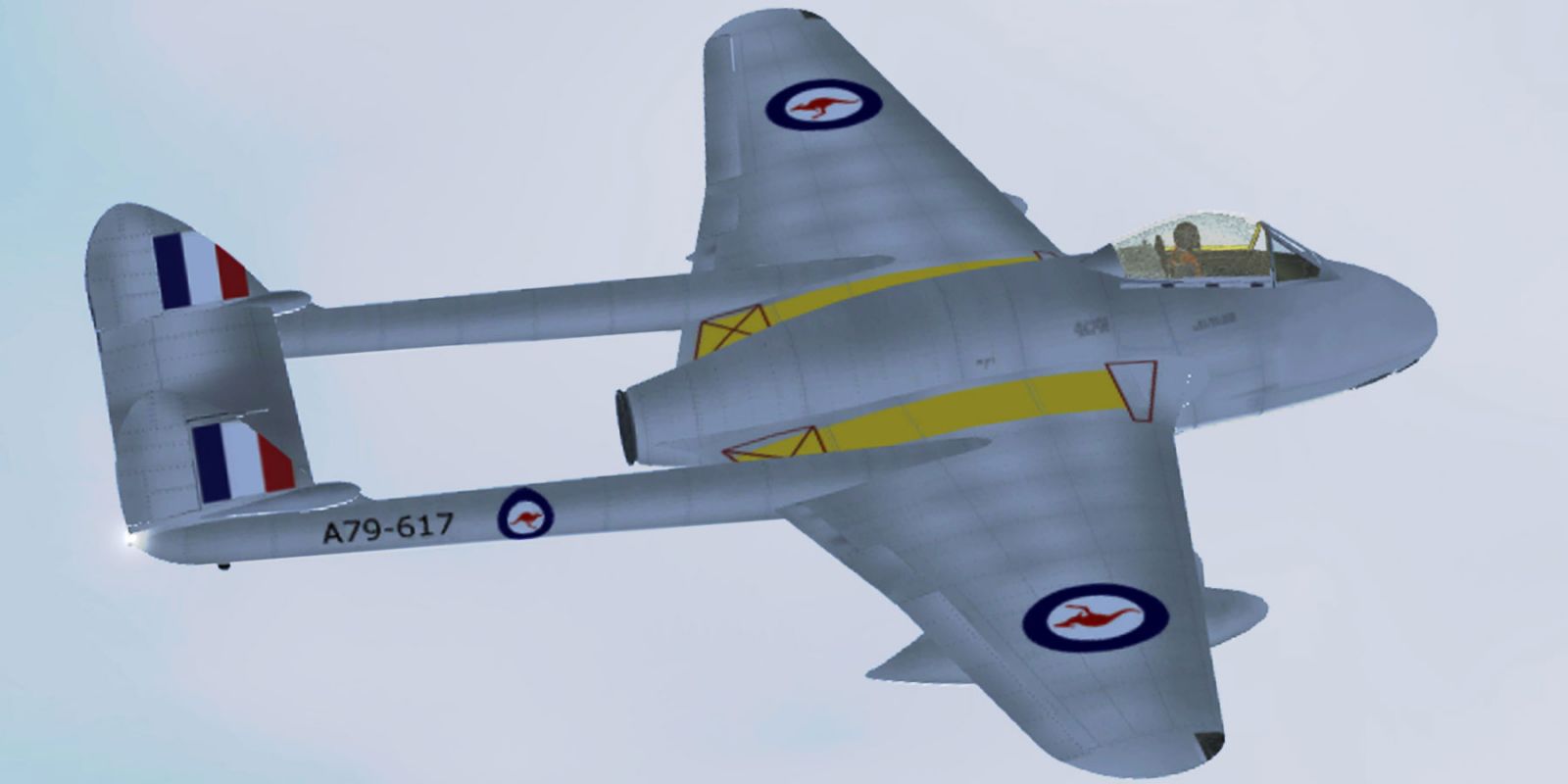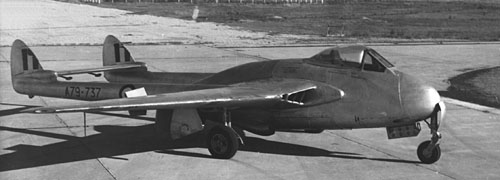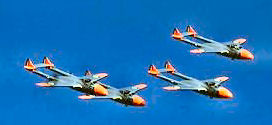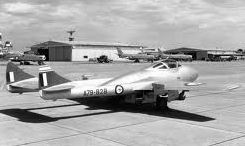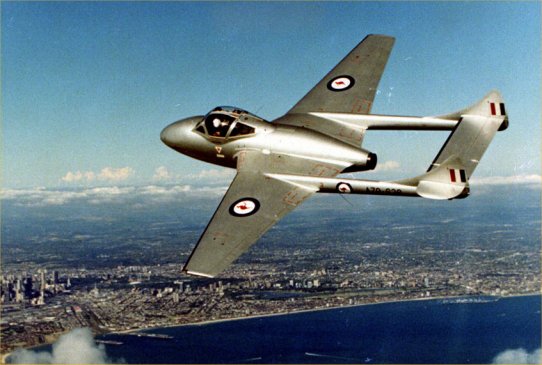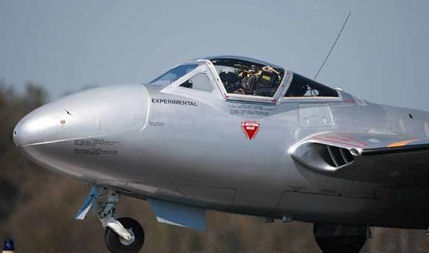|
|
|
Radschool Association Magazine - Vol 41 Page 16 |
|
Privacy Policy | Editorial Policy | Profit Policy | Join the Association | List of Members | Contact us | Index | Links |
|
Back Go to page: 1 2 3 4 5 6 7 8 9 10 11 12 13 14 15 16 17 18 19 20 Forward |
|
|
|
Turnbull Field.
The Hon Jason Clare, MP,
Minister For Home Affairs. Minister For Justice Minister For Defence Material
Press Release.
“Tyranny was turned back at Turnbull Field”
|
|
There are few events in our history as important, but as little known, as those that took place at Turnbull Field, back in September 1942, just over 70 years ago.
More and more Australians know the story of Kokoda. Very few know the story of Turnbull Field. They should, because this is the place where the charge of Japanese land forces across the Pacific was first stopped and pushed back. 70 years ago as a battle raged across the Owen Stanley Range, another battle raged at Milne Bay on the east coast of Papua New Guinea.
It was just as ferocious. The stakes were just as high. The conditions were just as terrible and the heroes were just as real.
The Japanese landed under the cover of darkness on the 26th of August. Their targets were three airstrips. Over the next few days they pushed the Australians back until they reached airstrip number 3, Turnbull Field. In the early hours of the 31st of August the Japanese attacked.
The 47th General Hospital, Milne Bay, May 1944.
Recently I visited this sacred bit of ground and met some of the men who fought there. Men like Bill Hansen and Ed Jones. Meeting them is one of the real privileges of this job. They are modest men with extraordinary stories. When Bill arrived at Milne Bay 70 years ago he thought it was hell on earth. It rained all the time and malaria and dysentery were endemic. It was also the place he met a friend he would have for the rest of his life. His name was Cliff. Before long Cliff was struck down by malaria and shipped home, but their friendship didn’t end there.
Cliff was taken to a convalescence camp not far from Bill’s house and he would visit Bill’s mum for dinner and write letters back to Bill telling him about the meals. I am not sure if Cliff was there for the food though, a few years later he married Bill’s sister. In January this year Cliff passed away. Cliff and Bill were mates for 70 years and brothers-in-law for 61. Mateships were forged here and mates were also lost.
Ed and his best mate Jimmy signed up on the same day and were sent to Milne Bay .It wasn’t long before Ed saw action. His unit was ordered to attack from a creek bed, straight into Japanese fire. He emptied two magazines into the enemy before being shot through the arm. He said it was like being hit with a metal bar. He crawled back to the creek bed, fumbling with his good arm, trying to get his field dressing to stop the bleeding.
Then out of the jungle came an Australian soldier. He bandaged him up, gave him a wink and disappeared back into the jungle without saying a word. Ed says it changed his outlook on life forever. Jimmy wasn’t so lucky. He survived Milne Bay, but he was killed months later at Buna. Bill and Ed are two of thousands of Australians who served at Milne Bay in 1942. One of them was my grandfather. He was part of the 55thBattalion who helped build the airstrips. In early August he was struck down by malaria and evacuated back to Port Moresby. In December he was sent to Sanananda. He was cut open there by shrapnel from a Japanese mortar. He survived, and so did the shrapnel. My grandmother kept it in a steel cigarette tin for the rest of her life.
We are a lucky country. We didn’t have to fight for our independence, but we had to fight to keep it. And fight we did at Turnbull Field. Wave after wave of Japanese marines charged across that field that night and wave after wave were cut down and pushed back. Historian Peter Brune tells the story of a Japanese soldier yelling across airstrip in pretty good English “it’s no use…we’re coming across”.
The reply from the Australian RSM was “pig’s arse you are”.
They never made it across Turnbull Field. This was as far south as Japanese soldiers ever advanced. What happened at Turnbull Field 70 years ago is only one part of a much bigger story– Kokoda, Guadalcanal, the Coral Sea and Midway. The story of all these battles is intertwined. Each affected the other.
But it is true to say that the myth of the invincibility of the Japanese land forces was first broken here. 70 years ago. Tyranny was turned back at Turnbull Field – by men like Bill and Ed and their mates.
Lest we forget.
|
|
A bloke is watching a film with creepy organ music on the TV and suddenly yells, "Don't enter that church, you dopy bugger !!!" His wife asks him, "What are you watching?" He replies, "Our bloody wedding video" |
|
After-market protection for your car. Carsales
For the fastidious vehicle owner it can sometimes seem that the world is bristling with nasty things out to damage your pride and joy’s paint, panels and mechanical components. In the great tradition of capitalism, there are also loads of businesses keen to sell you products claimed to minimise or eliminate such damage. The question is, how well do these products work and will the extra cost deliver dividends now and at resale time?
PAINT PROTECTION FILMS.
In years past, car-makers fitted shields to protect extended mudguards from stone damage. The Porsche 930 Turbo and early 1950s Holden's are a couple that come to mind. Later solutions included toughened paint for spoilers and sills. Today, adhesive film can be applied to almost any surface to provide near-invisible protection. These films are commonly installed by manufacturers before vehicles leave the factory but have now become available for do-it-yourself application.
The strips can be cut to size or supplied in a kit with sections shaped to fit specific areas of particular models. They fit neatly across vulnerable areas such as the leading edge of the bonnet and front air-dam, wheel-arches and mirrors. Adhesive film can also be applied to headlights, although plastic covers that can be removed for cleaning are preferable.
The films are warranted against manufacturing defects, but not against any damage sustained due to stones or other impacts. Aged or damaged film is difficult to remove without also lifting the vehicle’s ‘clear-coat’ paint finish. If this happens you’ll be up for a trip to the panel beater to have the affected areas refinished.
Adhesive films can, within a few years, begin to discolour and lift at the edges, making their presence quite obvious. As a result, old or damaged film may end up detracting more from a vehicle’s value than taking your chances without it and paying to have stone chips retouched if necessary.
ELECTRONIC ANTI-RUST SYSTEMS.
Just as the late Peter Brock expressed complete belief in his controversial ‘Energy Polariser’, these electronic anti-rust systems fall squarely into the ‘ya gotta have faith’ department. Most such devices use an ‘electron generator’ to feed a negative charge through the vehicle, supposedly reducing the depletion of electrons from the metal to delay and minimise the onset of rust.
When fitted to cars or 4WDs these systems require multiple ‘couplers’ to distribute the charge to nearby metal surfaces. They must be wired exactly as specified to deliver the claimed levels of corrosion protection. Damaged paint can interrupt transmission of the charge and leave sections of the body unprotected. Box sections that collect dirt, leaves and other debris are also left virtually unprotected.
Vehicles that are frequently immersed in water – salt water in particular acts as an excellent conductor – seem to deliver better results than those that spend their lives in a drier environment. People who have these systems generally report less than expected levels of rust, but if you’d outlaid several hundred dollars on a device you’re more likely inclined to view its performance in the best-possible light.
The systems themselves are unlikely to contribute to the long-term value of a vehicle but, if they do their job, the absence of rust certainly will.
ANIMAL DETERRENTS.
Ultra-sonic devices that
are said to keep animals away from fast-moving vehicles have existed
for decades, as has the debate over their effectiveness. The
web-site for a well-known brand of kangaroo deterrent contains
dozens of glowing endorsements, while on the flip side the holding
yards of rural towing contractors also contain roo-dented cars
fitted with these devices.
In their simplest form, animal deterrents can be a couple of cones screwed to the grille or bull-bar to generate a high-pitched whistle. How this sound is projected far enough in front of a vehicle travelling at 30 metres/second (110 Kl/h) isn’t explained, but that doesn’t prevent some users swearing by them.
More sophisticated electronic versions emit a high-frequency tone, projected ahead of and beside the vehicle, to discourage animals from moving closer to the source of the sound. These devices need to be professionally installed and can be switched off in urban areas. We’re not aware of any insurers offering lower premiums for vehicles with such ‘deterrents’ installed. However, with a professional system costing around the same as a typical insurance excess, avoiding just one encounter with a ‘roo would see the system in credit.
That said, we’re inclined to think the most effective means of avoiding animal strikes combines a good pair of driving lights, keen eyes, and travelling at lower speeds in areas where animals are likely to be grazing near the roadside. Now, all we now need is a device that stops the neighbour’s dog lifting his leg on your newly-cleaned wheels.
PROTECTION FOR OFF-ROADERS.
Ironically, many vehicles supposedly built for off-road use fail to properly protect their vital under-body components from damage. Most four-wheel drives have some kind of engine and sump protection, a protected fuel-tank and perhaps guards to deflect rocks away from axle joints. But serious shielding to protect against heavier impacts is usually the realm of after-market suppliers.
The most common items fitted by off-road enthusiasts include more robust sump and transmission guards, protection for the steering rack and control arms, differential and rear axles. Models with low-slung fuel tanks also benefit from a ‘skid-plate’ that prevents tank damage when exiting steep creeks and gullies. These items can be bought individually or in kits that have been designed to look after the vulnerable areas of specific models.
Drawbacks of fitting additional under-body protection include extra weight, the possibility of snagging a component on a rock or stump, more places for mud and debris to accumulate, and increased service costs as the guards may need to be removed and refitted. Bullbars are another form of vehicle protection that have been around for decades but which today raise more questions than they offer answers. Modern automotive design incorporates sophisticated crumple zones designed to absorb energy in a crash, and a variety of sensors for the actuation of air-bags. Clearly, fitting a solid lump of steel or alloy bull-bar in place of the front bumper has the potential to compromise the performance of these features and hence a vehicle’s safety envelope.
A reasonably new innovation are bull-bars made from polyurethane, which offer similar levels of vehicle protection in moderate impacts and are less of a threat to pedestrians than traditional metal designs. These ‘smart’ bars are shaped to fit specific models and can be colour-coordinated to your vehicle. They are claimed to be compatible with air-bag sensors that might not trigger correctly in impacts involving more rigid bars. The plastic bars do deform when hit hard, however, and can be forced into the body panels causing damage.
In similar circumstances, a rigid bar may not move at all but will transfer load through the vehicle chassis to occupants. They may also cause damage to mounting points or the chassis itself.
|
|
Because they had no reservations at a busy restaurant, an elderly man and his wife were told there would be a 45-minute wait for a table. "Young man, we're both 90 years old," the husband said. "We may not have 45 minutes." They were seated immediately.
|
|
The Red Sales.
A bit over 50 years ago, on August 15, 1962, the RAAF’s formation flying team, the Red Sales, crashed at Dutson, Vic, killing all six airmen.
Four Vampire aircraft took off from East Sale for a period of
formation aerobatic training in the area southeast of the airfield.
They had arranged to operate on a discrete VHF frequency so as not
to interfere with normal air/ground operations and as a result, the
frequency was not monitored or recorded.
At approximately 2.00pm, a DC3 reported to ATC that they could see black smoke in the Dutson Bombing and Gunnery Range area. Subsequent investigations revealed that all four Vampire aircraft had crashed east of the airfield. Rescue and fire fighting vehicles were despatched to the area immediately and shortly afterwards it was confirmed that all six crew members had been killed.
The accident was almost beyond comprehension - not one, but all four aircraft lost in a single instant. The accident, understandably, attracted considerable media coverage both locally and overseas.
The Red Sales team was practising for a RAAF Open Day Display which was to be held on the 16th September 1962. The four aircraft struck the ground almost simultaneously in the final stages of completing a low-level barrel roll. They crashed in close proximity to each other in a shallow dive and at an estimated speed of over 300 kts. The No 3 in the formation struck the ground slightly ahead and approximately 150 yards to the port side of the others. On impact, three aircraft exploded - wreckage and debris was scattered over a distance of approximately half a mile. The wreckage of No 3 in the formation was not as completely disintegrated as the others as it had 'levelled out' just prior to impact.
All four pilots were members of the Central Flying School (CFS), as well as members of the aerobatic team. Additionally, two other CFS staff members were flying as passengers: one as an observer, nominated to eventually replace one of the team members; the other to assist with operation of one aircraft's ancillary controls where the pilot was flying from the right seat.
All pilots were very experienced and were all medically fit. At the time of the accident the formation leader was leading his fifth aerobatics sortie - one in June, another in July and the remainder in August. During August, the team had settled down to an increased rate of training which was to be further increased to two sorties per week.
Many favourable observations had been made as to the efficiency and reliability of the team. A number of people on the unit had flown as ballast crew and it was accepted that the team were not prone to taking unnecessary risks.
The standard routine was to carry out a sequence of loops, steep turns and barrel rolls in that order, finishing with a downward bomb burst. The speeds for all manoeuvres were in the vicinity of 300 kts and 3g accelerations were seldom exceeded. On all barrel rolls to the left, the routine was to complete a full roll and then to enter a turn in the same direction.
The flight authorisation in the old Form A71 showed the flight
authorised as a 'Red Sales formation exercise as briefed'. No
mention was included relating to safety heights. As the Red Sales
were led by one selected pilot who performed a fixed routine within
limits prescribed by the Commanding Officer at CFS, it was
considered there was no need for special written orders.
A study of the aircraft log books and the maintenance logs revealed that there were no recurring unserviceabilities on any aircraft and all were fully serviceable for flight.
The customary procedure prior to each flight by the Red Sales was for the formation leader to brief the members of the team as a group. It was normal for the leader to cover the following aspects in his briefing:
• general information on the nature of the mission; • aircraft allocation to the members; • fuel load to be carried; • R/T frequencies; • starting time; and • a detailed description of each manoeuvre in the sequence to be followed.
The briefing on this occasion was of an informal nature. It was conducted by the formation leader with the members of the team sitting around the fire in the crew room. A pilot who was in the vicinity of the briefing room during the greater part of this time overheard much of what was discussed and was convinced that the briefing was thorough and relevant. He distinctly remembered the concluding remark made by the briefing officer who stated:
“I shall carry out a routine sequence of maneuvers and try not to introduce anything new, nor omit anything.”
Reliable reports from the impact area and the spotter Dakota assessed the local weather as fine and beaut, virtually cloudless with very slight turbulence.
The terrain in the vicinity of the crash was extremely flat with about a one degree gradual slope rising from 50-100 ft AMSL. An east-west bitumen road close to the impact area and bombing and gunnery range, ran alongside an open drain with power lines on the south side. Several civilian witnesses working in the area observed the formation carrying out their training sequence. In general they had viewed the aircraft, under conditions of good visibility, carrying out loops, steep turns and barrel rolls at low altitude. In all the manoeuvres, the witnesses were impressed by the precision positioning of the aircraft in tight formation.
Only one witness gave his full attention to the last manoeuvre preceding the crash. The area was one in which aircraft from East Sale were continually operating at low level on training and armament exercises. For the most part, the witnesses had been preoccupied and only noticed the formation when it came into their immediate field of view or their attention was drawn to it. No witness, except a former RAAF pilot, had a complete picture of the final manoeuvre and crash.
While there was insufficient evidence to establish the exact sequence of aerobatic manoeuvres and altitudes flown preceding the accident, eye witness accounts suggest that the normal practice routine was being carried out and at altitudes down to the minimum prescribed, if not lower. Loops and steep turns were observed prior to the formation commencing a climb from which the fatal barrel roll to the left was initiated.
During a test in which a Vampire aircraft was flown overhead on simulated runs, the one witness to the final manoeuvre displayed a sound ability to assess height fairly accurately and indicated that the four aircraft had entered the fatal barrel roll at about 500 ft, with a nose-up attitude of about 10°, which resulted in a maximum height gain of not more than a few hundred feet. After passing the inverted position the formation appeared to the witness to dive at a steep nose-down angle, flattening in the final stages before striking the ground.
From a study of the impact area and discussion with witnesses, it was assessed that the formation climbed on a heading of 265 degrees M which positioned them immediately south of Seacombs Road, two miles from the impact point. The final barrel roll to the left was then commenced which led to impact with the ground immediately south of the road.
There was some intermingling of the wreckage of Lead and No 2 on the surface of their respective craters. Positive identification was established from identifiable components such as brake 'Maxaret' units which were deeply buried in the crater. The individual aircraft flight paths at the time of impact were determined by compass sightings taken through the clearly obvious centre-line of each impact crater.
In comparing the individual flight paths and impact points at the moment of the crash, and in relating this comparison to the fatal manoeuvre, the following deductions were made:
• No 3, being on the high side had appreciated the dangerous proximity of the ground during the final stage of the roll. He had broken formation, levelled his wings, and had made every effort to pull up before striking the ground. • No 4 had also appreciated the dangerous situation and had taken similar action to that of No 3, but slightly later. It is possible that the sudden movement of No 3 prompted the action of No 4. The slope of the ground, when related to the flight path of No 4 immediately prior to impact, was such that with wings-level his left wing could have struck the ground first. • No 2 had an impact flight path truly parallel with that of No 4. The position of No 2 in the formation was such that in the final stage of the roll he was looking up at the leader and would not have appreciated the proximity of the ground. • Lead had an impact flight path which was 10° to the right of the parallel impact flight paths of No 2 and No 4.
The damage to the airframe structures of the four aircraft was consistent with the aircraft striking the ground at high speed. In every case the control surfaces were either still attached to the main surfaces or had been torn from the hinge points, as could be expected from the broken-up condition of the wreckage. There was no evidence to suggest that any control surface has failed or become detached in flight.
Broken control cables had failed with the characteristic fraying associated with grossly excessive tension loads. No evidence was found to suggest there had been a mid-air collision or bird strike.
The lead aircraft had struck the ground right wing low in a nose down attitude. The outer portion of the right main plane had broken off relatively intact. The aircraft had then overturned as was evidenced by the turf marks on the top surface of the port main plane and the ruptured condition of the booms. No 2 aircraft had impacted in a level attitude but at a high rate of descent. The plan form of the aircraft was plainly visible in the soft ground. The fuel tanks had also burst and the fuel had ignited.
No 3 aircraft was not nearly as broken up as were the three other aircraft. In fact, the instrument panel of this aircraft was found relatively intact. The damage sustained on impact was consistent with a high speed but low rate of descent.
No 4 aircraft had struck the ground in a tail-down attitude. The skin of the underside of the left main plane had virtually disappeared but portion of the upper surface skin of this main plane had burst from its securing rivets and was quite bright and clean. Much of the right main plane under surface was still attached, and the top surface was distorted by an explosion inside the main plane. The aircraft must also have had a high rate of descent.
The turbine discs of Lead, No 2 and No 4 aircraft became detached from the engines and it was evident from the condition of the turbine blades that these engines were under power at the time of impact.
The turbine disc of No 3 aircraft was still attached to the shaft of the engine, due to the lesser rate of descent of this aircraft. The turbine wheel had dissipated its inertia by grinding away the nozzle guide vanes of the engine. Here again it was evident that the engine had been under power at the time of impact.
Virtually the only aircraft instrument that yielded information was the clock of No 3. This showed a trip duration of 25 minutes and had stopped at 1403 hrs. No evidence was found that would lead to the belief that any other item of equipment in the aircraft had in any way contributed to the accident.
Formation flying requires great concentration on control and positioning. It is essential that all formation members rely implicitly on the leader for altitude, attitude and safety considerations. They concentrate solely on precision positioning. It follows that an explanation as to why the leader allowed a hazardous situation to develop will account for all aircraft crashing. No 3 attempted individual recovery at a very late stage despite the prerogative of the leader to carry out this action for all. This fact in itself indicates there may have been something wrong with the leader or lead aircraft, as the formation leader should have had the best appreciation of the situation.
Investigation determined that all engines were under power at the time of impact. Further, had power failure occurred in the lead aircraft the formation would have lost its identity immediately, and at a height sufficient to enable breakaway action to be taken. The leader would not have aggravated the situation by adopting such a flight profile. There was no evidence to suggest that an unserviceability of engine, airframe, or other equipment was the direct or indirect cause of the accident.
It was considered possible the leader could have encountered control loss due to foreign object jamming. During recovery from a barrel roll, increasing back pressure is required on the control column. This is particularly so as the angle of bank reduces to around about 20°-30°. Thus, any restriction which did not occur before this required amount of back stick was needed would not have been evident to the pilot before this stage of the roll was reached.
A pilot confronted with this situation at 600-700 ft would most probably resort to 'pulling hard'. The natural tendency would be to use both hands on the control column. In such circumstances it would be foreign to remove one hand to use the R/T button on the throttle lever. Also, in such a situation the manoeuvre would follow a flight path closely akin to the last stages of a normal barrel roll. The aircraft would be decreasing its angle of dive, which would give the other members of the formation the impression that recovery was fairly normal. Too low a height would be their first indication of trouble and this when it was too late. This is probably the only type of difficulty which could thus confuse them. From examination of the wreckage it was quite impossible to determine whether such a restriction had occurred.
As leader, a pilot would continually cross-reference on his ASI and altimeter. An erroneous indication either by an altimeter malfunction or misreading could influence his key positioning. This would not, however, override his visual observations and orientation, and action could have been taken to initiate a more positive recovery.
A mid-air collision immediately prior to the aircraft striking the ground could have been a possible cause; however, it could only have occurred at a very late stage of the roll and in such a manner that it was not observed by the witnesses who watched the aircraft complete an aerobatic manoeuvre and dive into the ground.
The possibility that No 3 may have collided with the leader is not borne out by the observations of witnesses. Although No 3 was observed to break from the formation, this was due to his appreciation of the impending impact.
Lack of visibility on the part of the leader might have been a contributory factor. However, no substantial evidence to this effect was determined. While the final track of the formation was into the sun, the aircraft were on a downward path at the conclusion of the barrel roll. The angle of elevation of the sun at that time of day on the 15th August 1962 was 30° above the horizon; therefore, dazzle from the sun was not considered to have been a direct cause.
Close attention was given to the medical aspects of the investigation, particularly in the case of the formation leader. The fact that Lead had been subject to a medical board arising from an incident in Malaya was well known to many flying personnel at the time. This was the subject of a considerable amount of inaccurate gossip as soon as the accident became known, the reference being to 'blackouts' which Lead was said to have experienced. The medical conclusion was that there was no evidence of physical disability on the part of the formation leader contributing to the accident.
A loose barrel roll is a very simple manoeuvre to carry out. The leader may have allowed the nose of his aircraft to drop to such a degree that recovery from the resultant dive was impossible.
The accepted objective in a barrel roll is to produce a helical flight path through 360° in the rolling plane and encircling a pre-selected point directly ahead of the line of flight. The selected point is normally on or slightly above the horizon. Ideally the flight path should describe identical symmetrical arcs above and below the horizontal level of the selected point.
To achieve this objective, one of the two following basic techniques is usually employed:
There are many variable factors which govern the flight profile during a barrel roll. The more important ones, each of which is variable, and all of which are controlled by pilot technique, are:
• the maximum nose-up flight angle achieved during the first half of the manoeuvre; • the average rate of roll during the first half of the manoeuvre; • elevator control technique approaching and passing through the inverted stage; • the average rate of roll during the second half of the manoeuvre; • elevator control technique during the latter half of the manoeuvre; • the initial entry speed; and • engine power setting used.
In the case of a sequence of aerobatics, the aircraft may commence a barrel roll from level flight at the conclusion of a previous manoeuvre because adequate speed has already been acquired and the aircraft is at the minimum specified altitude.
Had the formation leader intended to perform a barrel roll about a horizontal axis, an error of judgment or faulty technique could have resulted in an excessive loss of height. If it were being performed a very low altitude, then the safety margin would be reduced accordingly. In this instance the difficulty of recovering a formation from such a situation must be considered, especially as regards restricted manoeuvrability.
Either or both of the following factors could have been an underlying cause of the accident:
1. The accepted practice of observing a minimum height of 500 ft for formation team aerobatic manoeuvres. It is apparent that the Red Sales were in the habit of executing formation aerobatic manoeuvres down to the minimum briefed height of 500 ft. If the formation had initiated their final barrel roll at a height of 1,000 ft, the accident would not have occurred. 2. Insufficient regular practice by the leader in performing the team aerobatic routine at low level. It is significant that subsequent to flying a total of four dual sorties and one solo lead sortie during practice sessions by the Red Sales, prior to the departure of the previous leader of the team, the leader had led the team on only four occasions, which were spread over a period of eight weeks.
Conclusion.
Due to the very nature of this accident and the degree of aircraft breakup, post-impact examination achieved only limited results in some aspects. Consequently, there was insufficient evidence to isolate with certainty anyone underlying cause.
It was established that the accident to the formation resulted from failure of the leader to carry out timely recovery action when committed to a low-level aerobatic manoeuvre. Whilst the cause of the accident will never be positively known and certain speculation must always exist, credence must be given to the following three possibilities:
• An error of judgment or faulty technique on the part of the leader in executing a barrel roll to the left at low level. • Foreign object restriction of elevator control movement. • Physical disability affecting the leader.
However, the weight of evidence indicated that the accident occurred as a result of an error of judgment, or faulty technique on the part of the leader.
|
|
The thing I love most about this hot weather is the short skirts and low cut tops. Although they do make me look a bit gay. |
|
Back Go to page: 1 2 3 4 5 6 7 8 9 10 11 12 13 14 15 16 17 18 19 20 Forward |
|
|

